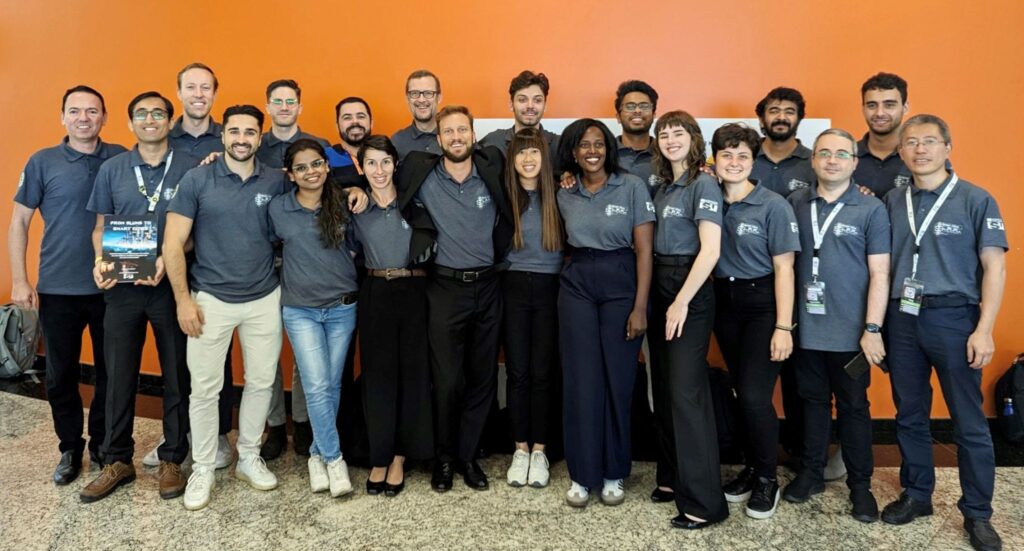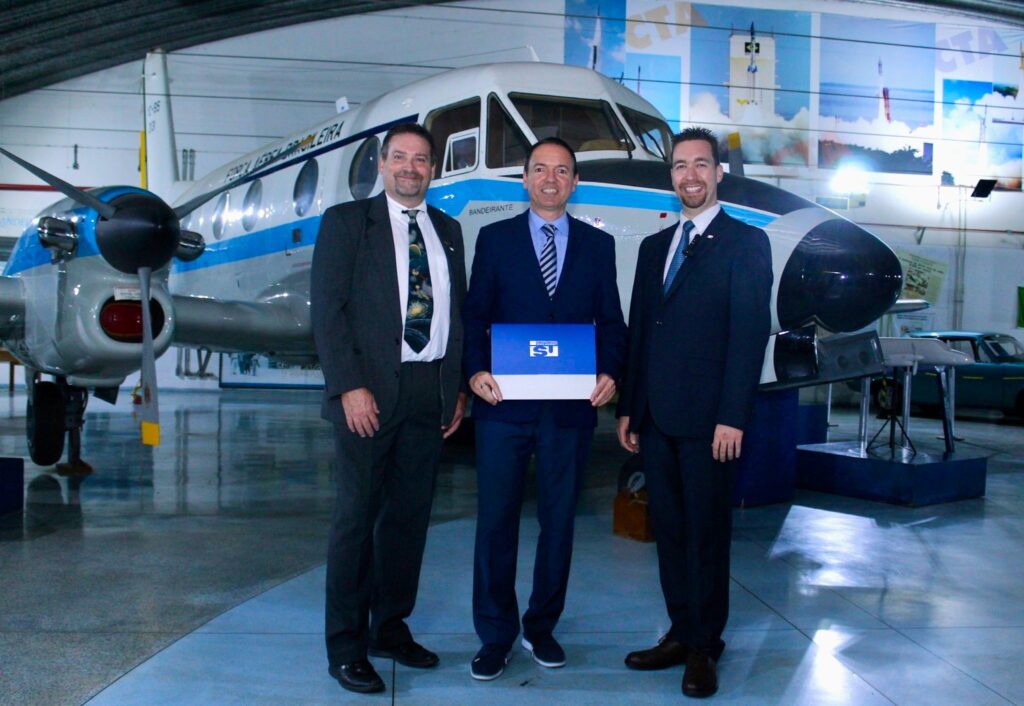by Tolga Ors
In this article, Tolga Ors, PhD, shares the path that brought him to Team Tumbleweed, to lead the Software Engineering team. After working with our co-founder Julian at the International Space University Space Studies Program in 2023, Tolga was intrigued by Julian’s leadership skills and our start-up’s paradigm-shifting vision of making Mars accessible to everyone.
My space journey began with an MSc in Satellite Communications at the University of Surrey. I was fortunate to study under Sir Martin Sweeting, founder of the University’s small satellite experiments, which led to Surrey Satellite Technology Ltd (SSTL) in 1985. This start-up manufactured small satellites, using off-the-shelf components, quickly and affordably for government customers. While Space 1.0 was the exclusive domain of government/inter-government agencies and their giant sub-contractors, universities played a crucial role in legitimizing Space 2.0 technologies – space technologies led by the private sector – which greatly influenced me.
Despite this exposure, most of my initial career was in Space 2.0. After about a decade, during an interview, someone called me a “dinosaur” for still using waterfall project management methodologies based on large, slow space projects with upfront detailed requirements.
I realized I needed to change careers to avoid becoming obsolete. Although governments remained primary customers, Space 2.0 had come to stay and represented a significant shift. The private sector’s ability to build faster and cheaper made the traditional Space 1.0 approach look outdated. I adapted to Agile work methodologies and hybrid project management approaches, focusing on satellite communications and artificial intelligence (AI).
Good To Know: The Space Eras
Space 1.0 refers to the early decades of space exploration. During this era, space exploration was dominated by superpower nations, especially the USA and the USSR, and was characterized by government-led initiatives and national space programs.
Space 2.0 brings a new energy to the space industry led by private companies that offer services such as transportation and access to space and satellite communications. While governments and large sub-contractors remain as the main end-customers, Space 2.0 marks the transition to a more collaborative and commercially-oriented phase. This era began in the late 20th century and continues to the present day.
Space 3.0 is an emerging paradigm that envisions a more democratized and sustainable use of space, with a broader range of participants and a focus on new frontiers such as deep space exploration, space tourism, and space resource utilization. Space 3.0 is about broadening participation, sustainability, and long-term human presence in space.
My space focus was rekindled when I received an European Space Agency (ESA) and UK Space Agency (UKSA) scholarship for the Space Studies Program (SSP) at the International Space University (ISU) in 2023.
The ISU SSP was incredibly intense, with compulsory evening presentations leading to sleep deficiency among students. The team projects, lacking clear leadership structures, often resulted in conflicts. One team member, Julian Rothenbuchner, stood out for his handling of difficult conflicts with a progressive and democratic approach. He also turned our doomed team project presentation, about bringing space technologies to slums in Latin America, into an outstanding one.
Intrigued by Julian’s class presentation about the start-up he co-founded, Team Tumbleweed, I researched the company further. I realized it was a true, sustainable Space 3.0 start-up, offering an alternative proposition to collect scientific data on Mars at a fraction of the cost of over-engineered, single-point-of-failure big rover approaches.

With strong leadership, Team Tumbleweed had made significant progress over 5+ years, with an all-volunteer team.
I was drawn to be part of this Space 3.0 start-up, representing the next paradigm shift in the industry, and I joined the team as the Head of Software Engineering shortly after I finished the ISU SSP. My team is responsible for developing a unique low Size, Weight, and Power (SWaP) planetary navigation algorithm. This year, we have presented our progress at the 7th Space Resource Conference in Krakow. We have weight and processing power constraints that none of the other planetary rovers have, so we are working on unique sensor fusion algorithms.
What differentiates Space 3.0 companies from Space 2.0 is that while they also serve space agencies, the focus of Space 3.0 is mainly on private instead of government customers. While this opens up a wide range of opportunities, it also makes them financially more vulnerable because they lack an early stage institutional funding boost.
For a startup with a long-term vision for Mars, like Team Tumbleweed, this means that it is crucial to find alternative revenue streams or investor funding to transform designs, prototypes, and simulations into reality. This is where the executives focus is, pitching to investors and attending space-related events like the 10th International Conference on Mars, the Cassini Entrepreneurship Days, or IAC24.
Although all space start-ups face significant challenges, they offer numerous rewards. Space 3.0 start-ups offer the additional, exciting opportunity to be part of a new paradigm in the space industry.
Being involved with Team Tumbleweed allows me to contribute to innovative solutions and work with super-motivated individuals, who will revolutionize planetary exploration. The collaborative, agile nature of Space 3.0 start-ups fosters creativity and rapid innovation, making every day an adventure. While the path may not be easy, the potential to make a lasting impact on space exploration and push the boundaries of what’s possible is immensely fulfilling.

About the Author: Tolga Ors
Tolga Ors, PhD, is leading the Software Engineering department at Team Tumbleweed with a focus on Guidance, Navigation and Control (GNC) algorithms for rolling Mars rovers.
Tolga has many years of experience in satellite communications, and wrote several successful UKSA and ESA co-funded private-public partnership proposals that resulted in new products incorporating the latest technologies. He specializes in leading teams, technology transfer, public-private partnerships as well as the use of Artificial Intelligence (AI) and robotics in space.
Learn more about Tolga’s work by following him on LinkedIn!
For further information, please contact office@teamtumbleweed.eu.